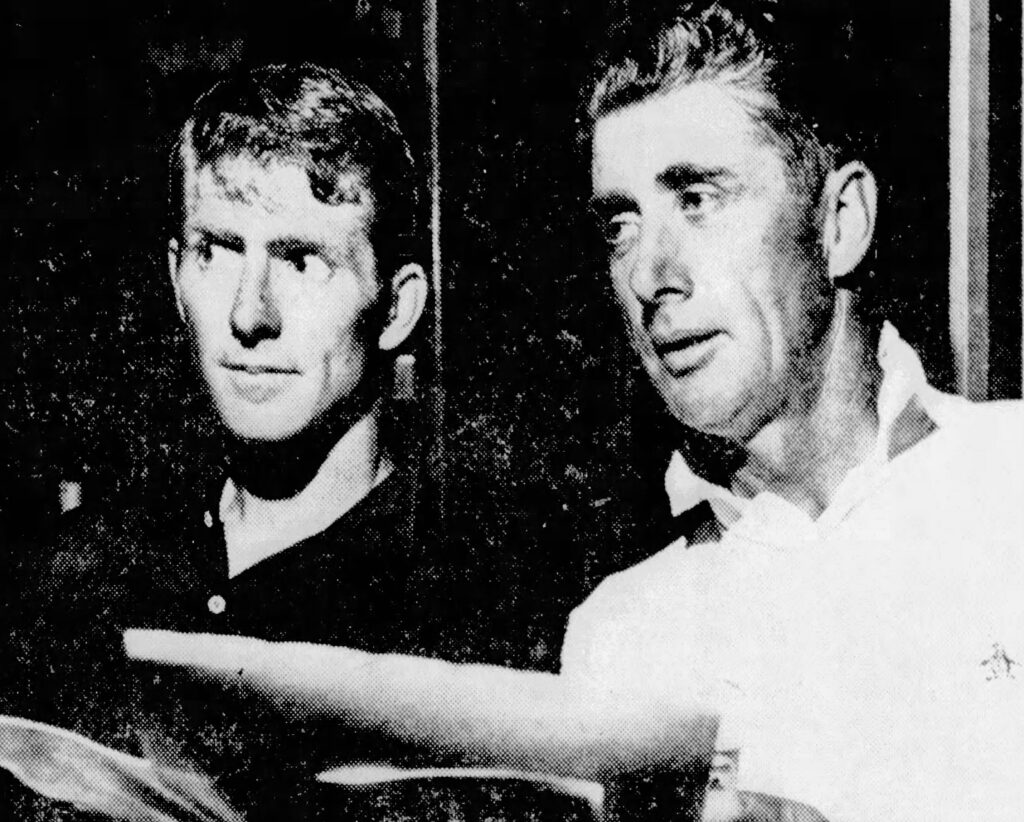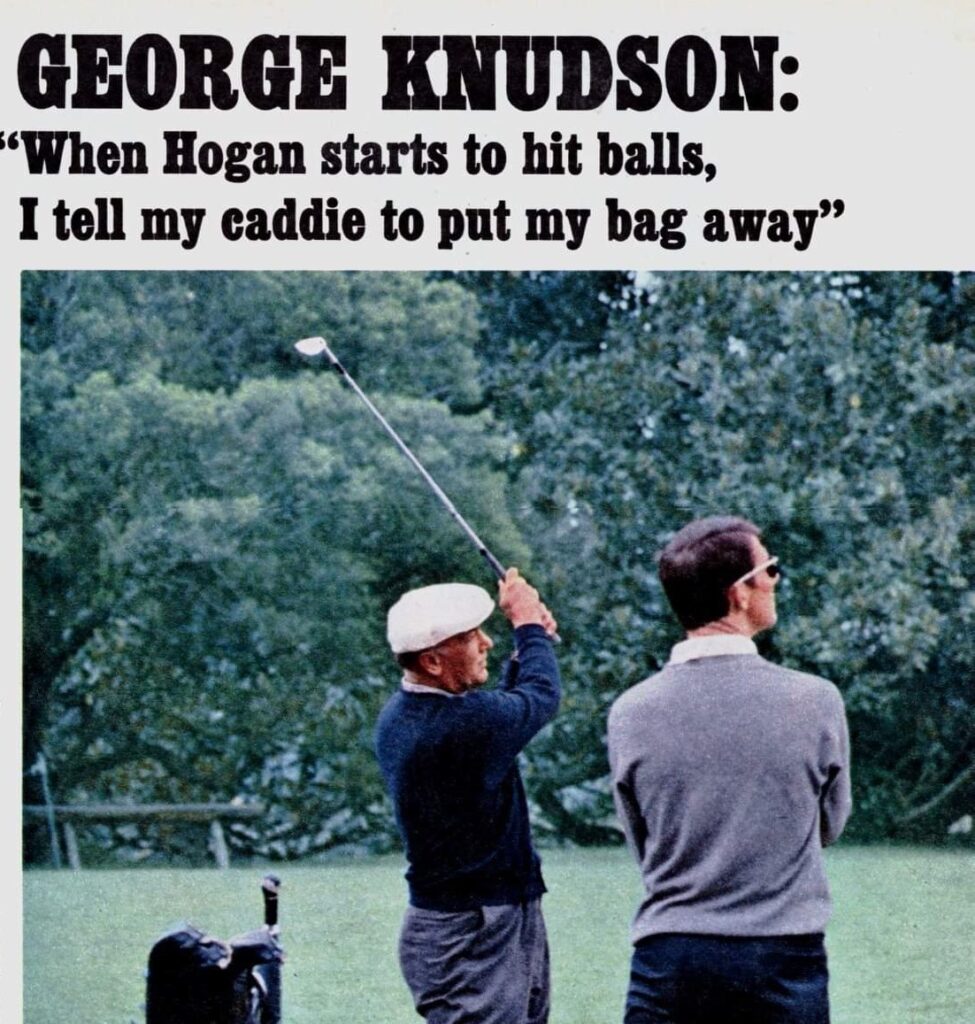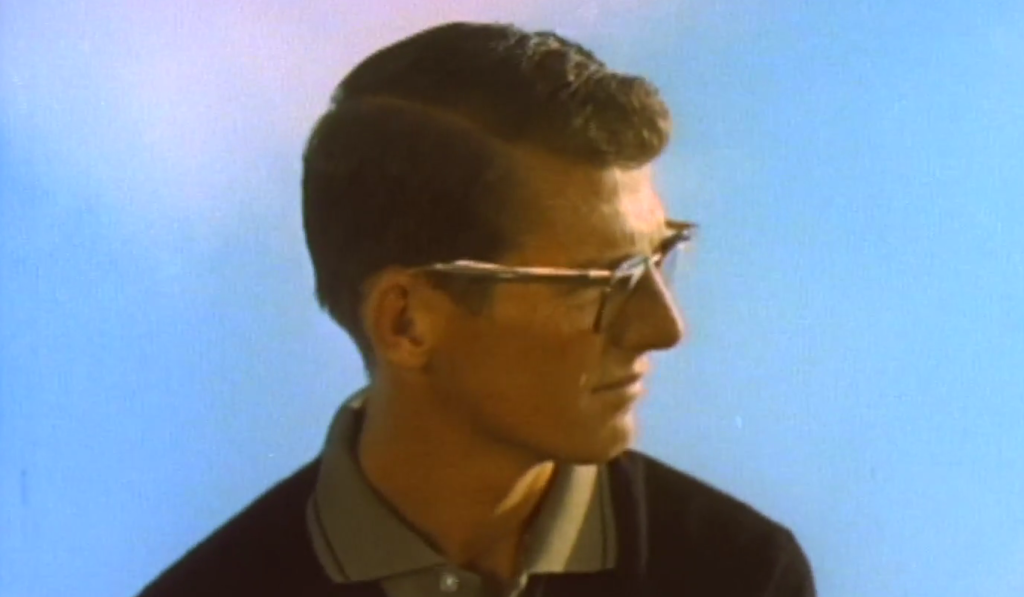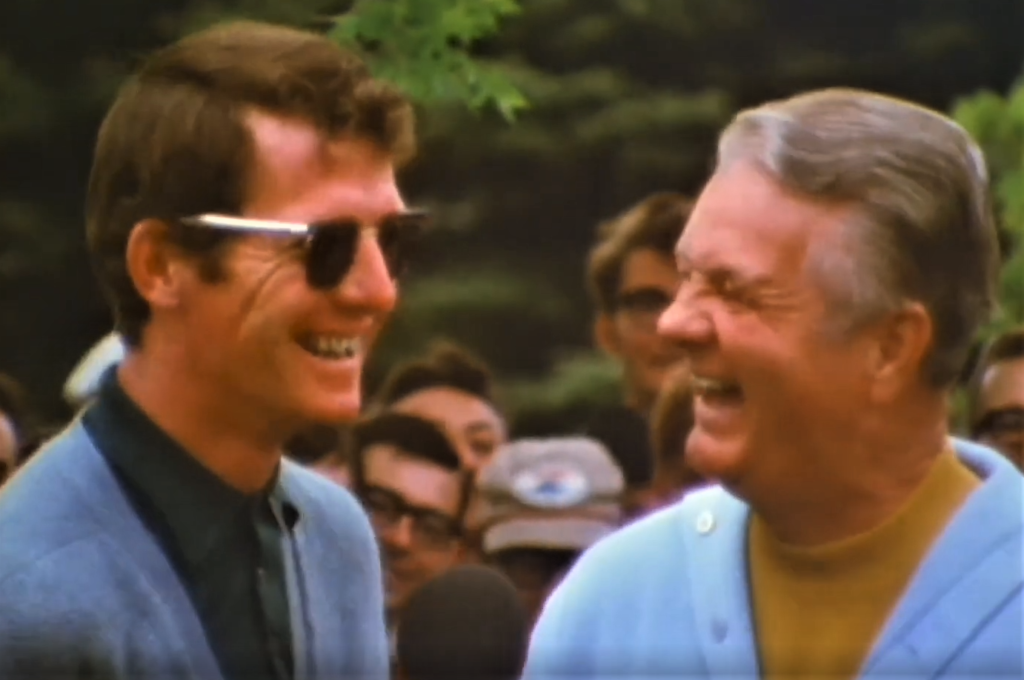The Story of George Knudson: The Man with the Million Dollar Swing
Golf is a sport of precision, grace, and power, often embodied by a few elite athletes who can combine all three in their swing. When you ask a fan of the sport who their favorite golf swing is, names like Fred Couples, Sam Snead, Adam Scott, or Ben Hogan are often mentioned. However, for those in the know, one name stands out as a perfect mix of style and substance: George Knudson.
Knudson’s swing wasn’t just functional—it was art. Powerful yet controlled, it resembled a well-executed painting or a sunset over the ocean. But behind the fluid motion and the aesthetics of his swing lay a tale of perseverance, talent, and unfulfilled potential. Knudson had everything—style, grace, and a swing so beautiful it’s still spoken of in reverent tones today.
But there was one glaring hole in his game: his putting. Despite his otherworldly ball-striking ability, Knudson was constantly battling against his putting woes, a flaw that may have kept him from truly fulfilling his potential. This is the story of George Knudson, the man with the million-dollar swing.
Early Life: Born to Play

Born on June 28, 1937, in Winnipeg, Manitoba, George Knudson didn’t grow up in an environment conducive to producing world-class golfers. Winnipeg, with its cold weather and limited playing season, wasn’t exactly Florida or California in terms of golf development. But that didn’t stop Knudson.
From an early age, he showed an extraordinary dedication to the game. Skinny as a boy, with a huge appetite, his mother often remarked about how much he ate—yet his frail appearance masked a strength and resilience that would define his golfing career.
By age 13, Knudson began to make his mark on the junior golf circuit, winning his division in his very first tournament. A year later, he captured the Manitoba Junior Championship and went on to win it again the next year, along with the Canadian Junior Championship in 1955.
Knudson quickly realized that his passion for golf was more than just a pastime—it was his calling. “That kid was me at the St. Charles Golf and Country Club in Winnipeg, my birthplace,” Knudson would later recall. “I practiced every chance I got. Practicing was my thing. I could hardly wait to get on the range.”
His love for practice became his trademark. Like his idol, Ben Hogan, Knudson was relentless in his pursuit of perfection in his swing. He immersed himself in hours of practice, often skipping rounds of golf to stay on the range. “Nothing can replace hard work,” Knudson would say, and it was this ethos that would drive him through his amateur career and into the professional ranks.
Breaking into the PGA Tour
In 1957, Knudson made a life-changing decision—he decided to pursue golf professionally. “After seeing the 1952 Canadian Open at St. Charles, I told my folks that’s what I wanted to do,” Knudson said. With his parents’ support, he left school and dedicated himself full-time to golf. He caddied on the winter tour and worked for fellow Canadian pros Al Balding and Stan Leonard, soaking in everything he could.
But breaking into the PGA Tour wasn’t easy. Despite being one of the most talented ball-strikers of his era, Knudson struggled in his early years. His putting was his Achilles’ heel. “I’d won only one check in my first three years on tour for $100 in the Crosby when I made the cut,” Knudson would later admit. “But I didn’t care. I was learning.”
Knudson’s breakthrough came in 1961 when he won the Coral Gables Open, his first victory on the PGA Tour. From there, he continued to build his resume, winning the Portland Open in 1963, the Fresno Open in 1964, and the Greater New Orleans Open in 1967. By that time, Knudson had tied Balding’s record for most wins by a Canadian on the PGA Tour. But Knudson was far from satisfied.
Knudson and Hogan: A Swing Philosophy

Knudson’s golf swing wasn’t just something he stumbled upon; it was the result of careful study and tireless work. At the heart of his philosophy was Ben Hogan, one of the greatest ball strikers of all time. Knudson idolized Hogan and even attempted to emulate him, both in his swing and his work ethic. “I’ll never forget the first time I set eyes on Hogan,” Knudson once said. “From that day on, every opportunity I had to watch Hogan, I’d drop my clubs and observe him.”
Knudson and Hogan developed a relationship over the years, bonded by their shared love for the golf swing and their mutual disdain for putting. Hogan’s influence on Knudson’s swing was profound, and many who watched Knudson play marveled at the similarity between their swings. Both men prioritized ball striking above all else. For Knudson, the golf swing wasn’t just a means to an end—it was an art form in itself.
In 1968, Knudson enjoyed the best stretch of his career, winning back-to-back tournaments at the Phoenix Open and the Tucson Open. His swing was in perfect harmony. “I was absolutely knocking the flag down, stuffing it down the throat of every hole,” Knudson later said of his performance during those two weeks. It was, by all accounts, the pinnacle of his playing career.
The Putting Problem

But for all the beauty of Knudson’s swing, his putting remained a persistent problem. Golf legend Jack Nicklaus once said, “George Knudson had a 10-cent putter.” It was a harsh but accurate assessment.
Knudson’s putting woes plagued him throughout his career, preventing him from reaching the heights that many felt he was capable of. Despite being one of the greatest ball strikers of all time, Knudson would often find himself out of contention simply because he couldn’t sink enough putts.
Knudson was painfully aware of this weakness. “The day that I’ve got my long game going is 99% of the time,” Knudson said. “I would just try and hit every fairway and green and two-putt.” This defensive style of putting, combined with his perfectionism on the range, likely held him back from achieving even greater success.
Shell’s Wonderful World of Golf and Major Performances

For those who haven’t seen Knudson play, footage from Shell’s Wonderful World of Golf provides a glimpse into the mastery of his swing. These televised matches, particularly the episode in which Knudson played against Lee Elder and George Archer, display his precision, style, and cool demeanor on the course.
One of Knudson’s finest moments came at the 1969 Masters, where he had a putt on the 18th hole to join a playoff with eventual champion George Archer. Knudson’s putt narrowly missed, leaving him tied for second, but it was his best major finish and a testament to his ability to compete on the biggest stages. In all, Knudson made 18 cuts in 21 major championships, with his best results coming at the Masters, where he had three top-10 finishes.
The Natural Golf Swing
In the late 1970s, Knudson transitioned from playing to teaching. He found a new passion in helping others improve their game, and in 1986, he released a now-famous instructional video, The Swing Motion. In it, Knudson preached a natural, tension-free swing based on balance and rhythm. His philosophy was simple: “Relax. Don’t play golf to relax, but rather relax to play golf.”
For Knudson, the golf swing was a natural motion that, when properly understood, could be executed effortlessly. His teachings have influenced countless golfers, and his instructional book, The Natural Golf Swing, remains a valuable resource for those looking to simplify their game.
Legacy and Passing

George Knudson passed away in January 1989 at the age of 51, succumbing to lung cancer. Despite his early death, Knudson left an indelible mark on the world of golf. His eight wins on the PGA Tour remain the most by any Canadian male golfer, and his contributions to golf instruction continue to resonate with players around the world.
For those who knew Knudson or had the privilege of watching him play, his legacy is one of elegance and simplicity. His swing was a masterpiece—smooth, controlled, and natural. As Knudson once said, “My great love is swinging a golf club.
Competition is secondary.” It was that love for the swing, more than anything else, that defined George Knudson’s life and career. His name may not be as widely recognized as some of the game’s other greats, but for those who appreciate the art of the golf swing, George Knudson remains a legend.
